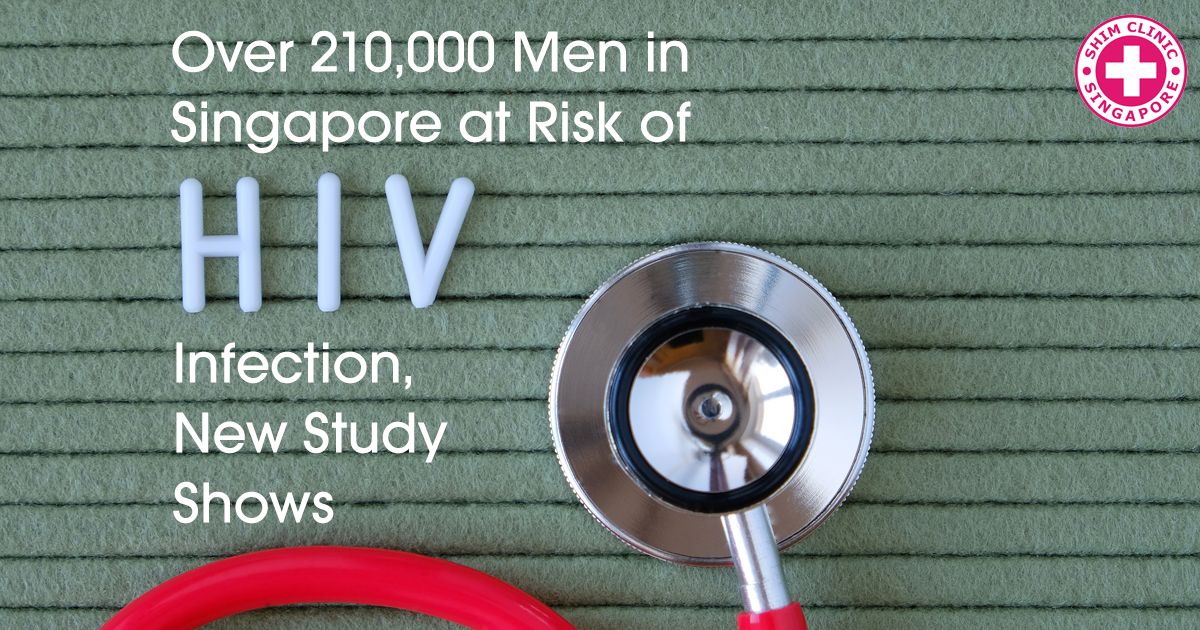In Singapore, 210,000 men engage in homosexual contact, which means they face an increased risk of an HIV infection. These are the findings of the latest National University of Singapore (NUS) analysis that were presented in early June.
This is the first study carried out in Singapore to estimate the number of people who may be at an increased risk of contracting the human immunodeficiency virus.
HIV Risk by the Numbers
The NUS study findings show a very large group of men at risk of HIV – more than double an earlier estimate of 90,000 individuals.
According to the study, the men engaging in sexual contact with other men are one of four groups in Singapore that face high HIV risk. The other three groups include the clients of female sex workers (approximately 72,000 people), the female sex workers themselves (approximately 4,200 people) and intravenous drug users (11,000 people).
The study, funded by the Health Promotion Board and the Singapore Population Health Improvement Centre, deals with an earlier issue – the lack of a systemic approach towards the collection of HIV-related data. Having no idea about the size of the population at an increased risk of an infection makes it more difficult to offer preventative and hiv treatment options.
Better HIV Care in Singapore
According to the researchers that conducted the analysis, the study will aid the effective planning and delivery of HIV care and prevention.
Singapore has a low level HIV epidemic. The epidemic is highly concentrated within the key populations examined by the NUS researchers. Now that the size of these populations has been established, Singaporean authorities can easily assess the resources required to deal with the epidemic.
Such studies have previously been carried out in numerous parts of the world – Iran, Japan and Ghana are just three of the countries reliant on such data to combat HIV and AIDS. The data is used for the introduction of national HIV prevention programmes, as well as for the monitoring and treatment of HIV-positive patients.
NGOs in Singapore welcome the academic efforts to establish the size of the population at risk. The findings are especially important due to the fact that the numbers are much higher than previously estimated. In addition, the NUS study is the first one to attempt determining the number of sex workers and their clients.
The new estimates show that current prevention and treatment efforts reach only 25 to 30 per cent of the populations at risk. A much broader policy and strategic programmes will be required to ensure widespread prevention and treatment availability.
HIV Attitudes in Singapore Unchanged Regardless of Medical Advances
It’s easy to see why the size of the populations at risk is miscalculated. Many people remain silent because of widespread social disapproval.
HIV social acceptance in Singapore remain very low, regardless of the innovative medicinal opportunities available locally.
Once the HIV status of a person becomes known, they could face serious repercussions in their family, social circle and even at their workplace. The recent Singapore HIV registry leak, thus endangered many people.
The lack of acceptance even extended among medical workers and students. In a survey, some of them said that they’d refuse offering treatment to an HIV-positive person.
Such societal views are largely outdated, taking in consideration the fact that an HIV infection can be reversed and , with the right treatment, does not necessarily have to develop into full-blown AIDS. Early HIV testing is one of the biggest essentials for the delivery of adequate and timely treatment with antiretroviral medications.
Individuals belonging to the high risk groups have access to two additional opportunities that can easily prevent the spread of the infection.
Pre-exposure prophylaxis (HIV PrEP) is especially well-suited to the needs of men who engage in homosexual contact with other men. PrEP is administered before the risk of exposure has occurred (for example – before unprotected intercourse). It is a type of antiretroviral therapy that’s administered for multiple days to effectively reduce the risk of HIV infection by 99 per cent.
Post exposure prophylaxis or HIV PEP can be delivered after unprotected intercourse if a person hasn’t gone for HIV PrEP. Once again – this is an antiretroviral therapy that blocks the virus, even if an individual has been exposed.
The effectiveness of HIV PEP depends on just how soon after the exposure the medication has been administered. PEP is most effective in the first 72 hours after unprotected intercourse and it can reduce the risk of becoming HIV-positive by 90 per cent.
A STD clinic should make both of these options available. Shim Clinic is a clinic that has these treatment options. In addition, we offer reliable and quick HIV testing, as well as consultations with our professionals. If you want to gain a better idea of the HIV prevention and treatment options, call us at (+65) 6446-7446 or visit us during our open hours every single day.


Pingback: The World is Getting Closer to HIV Vaccine Development